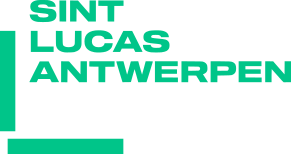In September 2019, Sammy Baloji started a PhD in the arts on creating new memory devices based on two existing ones used by different Luba groups in the DRC; Kasala, a ceremonial poem and Lukasa, a memory board used in ritual performances. The two groups using these devices were divided during the colonial era by borders drawn between the former provinces of Kasai and Katanga. The artworks created as part of this research aim to bring these groups back together through a narrative that is part personal, part historical and part fictional. The following two projects were developed as part of this research and highlight different aspects of Sammy's research and his artistic practice.
The Long Hand, 2022
Kom kijken op deze plechtige dag
Op deze derde dag van de maand juni 2022
Hoe gedachten van elders
Belichaamd worden in lokale materialen
Hoe de lukàsà van de Balubà in de DRC
Gemaakt van parels en stukjes metaal
Een fier monument wordt in een nieuwe omgeving
Drager van universele waarden
Kom en bewonder in de Belgische openbare ruimte
Deze merkwaardige verenigende figuur
Een werk over ontmoeting over herinnering
Drager van ideeën over emancipatie en broederschap
Belangrijk voor de Congolese diaspora in Antwerpen
Alsook voor de Antwerpse bevolking
- Excerpt from The Long Hand, a kasàlà written by Jean Kabuta at the invitation of Sammy Baloji and performed at the inauguration of Baloji's artwork The Long Hand on 3 June 2022
At the invitation of Art in the City, Sammy Baloji created a new artwork for the city's collection of art in public spaces. This monumental sculpture, entitled The Long Hand, takes up a permanent location on the Scheldekaai near the Zuidersluis in Antwerp.
Baloji made his work specifically for this location, as close to the Scheldt as possible. He sees the river as the access road from ‘here’ to ‘there’, the connecting road between the city and the world, but also between Belgium and Congo, the artist's native country.
The Long Hand refers to diverse sources, which merge into an artwork made in bronze, brick and recycled plastic - three composite materials. Bronze, an alloy of tin and copper, the latter one of Congo's main mining and export products. Bricks, artisanally manufactured in Maaseik from clay and soil extracted from Limburg's mining rills. Plastic waste from Belgian companies remelted and cast in the form of cut diamonds that embellish the bronze figure.
The shape and title of the sculpture are taken from the Lukasa, an artefact from the Luba culture in southern Congo. Lukasa (or ‘long hand’ in Kiluba) act as a memory aid or mnemonic device and are a vital part of the Luba tradition of oral history and knowledge transmission. With The Long Hand, Sammy Baloji introduces this memory object on a monumental scale in the city, joining the tradition of artworks in public spaces as memorials.
Typically, Lukasa are made in wood and richly decorated with abstract carvings and inlaid shells or (precious) stones. They are used in ceremonies in which the political history and mythology of the Luba people is told by a ‘memory man’. This person holds the Lukasa in his left hand and traces with his right hand the patterns and inlaid jewels, which serve as anchor points for the staged narration.
The coloured plastic diamonds are so applied to the surface of the bronze statue to represent the sea route between Antwerp and Muanda, the main port in Congo. The brick platform on which the sculpture stands was designed by the artist as a place for meetings and exchanges.
The wooden sculpture shown in this exhibition is the prototype that was manufactured as an intermediate step in the production process of The Long Hand, a test towards form and proportion.
Kasala: The Slaughterhouse of Dreams or the First Human, Bende’s Error, 2019
The Slaughterhouse of Dreams is a performance and interactive video installation on the subject of the transmission of Luba specific history through mnemonic objets and orality.
The Kasala is a ceremonial pœm, a laudatory, public and solemn way of naming the person. In the Baluba tradition, the“Kasala” is a well-defined form of slogans or pœtry in free verse. It is sung or recited, sometimes with instrumental accompaniment, by men and women who are professional specialists. It dramatizes public events that require strong emotions, such as courage in battle, collective joy at official functions, and mourning at funerals. In style and content, kasala is an entirely different genre with proverbs, myths, fables, riddles, tales and historical narratives.
A contemporary Kasala written by Fiston Mwanza Mujila - a Congolese author based in Graz, Austria - on expropriations of diamond diggers is recited by the author him- self accompanied by Patrick Dunst on saxophone and Grilli Pollheimer on the drums. On stage copper musical instruments (a drum and a trumpet) whose surface has been marked by traditional scarification are presented. In the meanwhile, the performance is recorded and transposed into an interactive installation where images of Con- golese television reports are mixed with images of X Ray scanned sculptures and images of Mbudye dancers. The public is thus able to interact and choose what they want to see and listen to.
This installation and performance were visible at the Rietberg Museum in Zurich and were filmed and then converted into the video that is now also shown in this exhibition.
